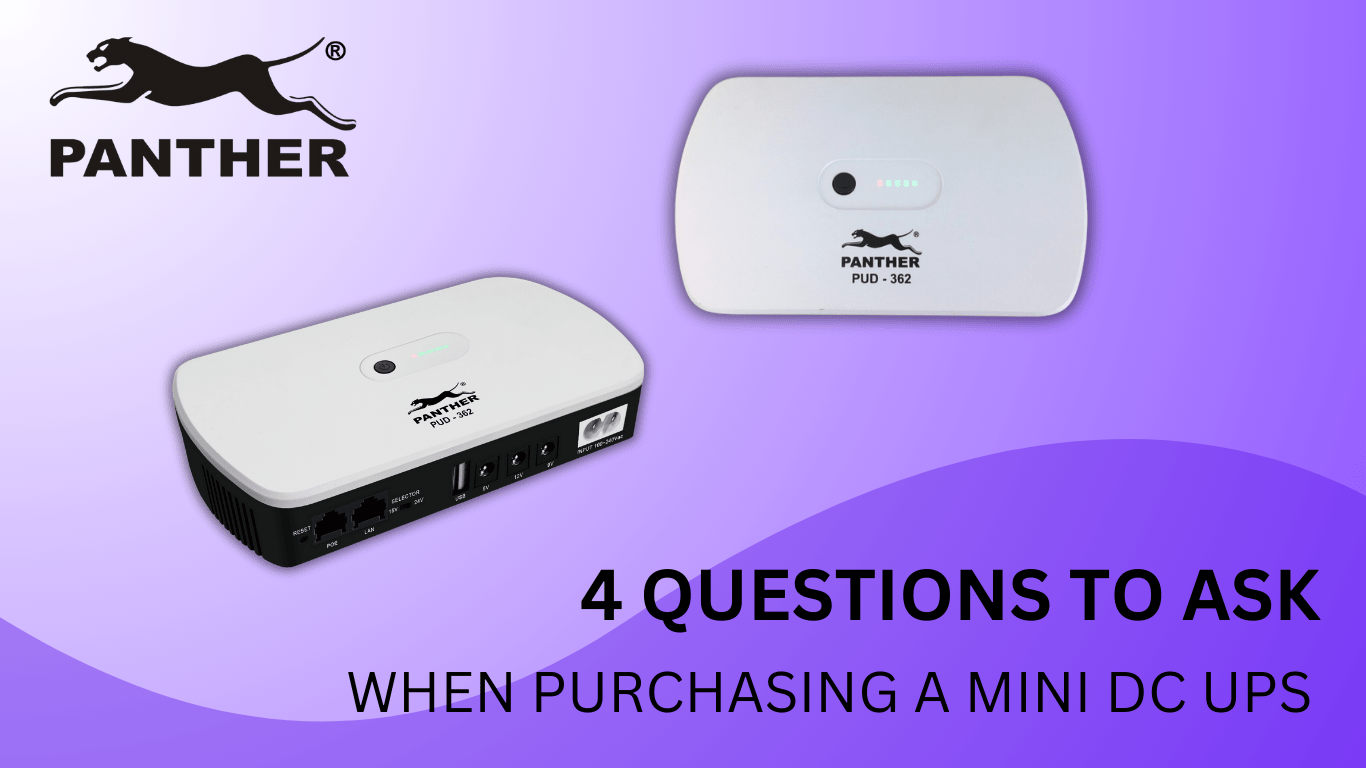
Table of Contents
In this age of digital connectivity, being cut off from the internet can feel like your limbs have been cut off. Thankfully, there now exists a solution to your woes. Using a DC Uninterruptible Power Supply (UPS), your WiFi router can continue supplying internet to your devices even in the event of a power outage. But, did you know there are four different factors you need to take into account when purchasing a DC UPS for your WiFi router?
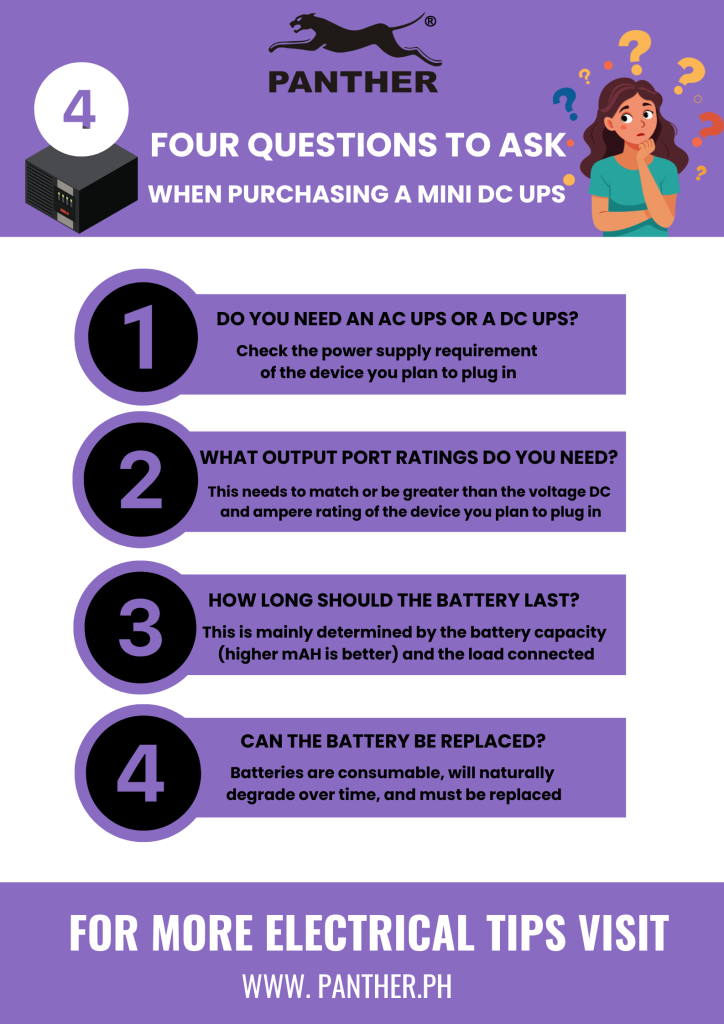
Factor 1: Do you need an AC UPS or a DC UPS?
The main difference between an AC UPS and a DC UPS lies in the name itself – one supplies AC (Alternating Current) power, while the other supplies DC (Direct Current) power.

AC (Alternating Current) UPS
- AC (Alternating Current) output is typically 220V – 240V AC, which is the standard power supply used for most home and office appliances. As such, a computer which uses AC power, would require an AC UPS.
- These AC UPS are typically more expensive as it converts the AC power supply to DC power to be stored in its built-in battery, then when an appliance needs the stored power, the UPS will then convert the DC power in the built-in battery to AC power for the appliance. As such, there’s a more complicated AC to DC to AC conversion process, and conversion losses will also occur along the way.
DC (Direct Current) UPS
- DC (Direct Current) output is typically at lower voltages such as 5V, 9V, 12V, 15V, 24V, which are often used for devices that require DC input, like WiFi routers, servers, and other communication equipment.
- Unlike the AC UPS, the DC UPS is more efficient and cheaper since less conversion is required. The UPS will convert the AC from the power supply to DC power to be stored in its battery. Then when the device needs it, it will directly supply DC power from the battery straight to the device.
But to answer this basic question isn’t up to you. Instead, check the device you plan to plug into the DC UPS. If your WiFi router is rated V AC (such as a Starlink), then you need an AC UPS. However, if it is rated V DC (which is the case for majority of WiFi routers in the Philippines), then you need a DC UPS.
Factor 2: What output port ratings (Voltage and Ampere) do you need?
WiFi routers come in various voltage and current ratings, so make sure the DC UPS you purchase can accommodate the specific requirements of your WiFi router.
First, make sure the voltage ratings match exactly. If your WiFi router states 12V, make sure the DC UPS has an equivalent 12V output port.
Second, make sure your DC UPS’ current rating is higher than what is indicated in your WiFi router.
For example: A Globe WiFi router is commonly 12V 1A. If so, make sure to purchase a DC UPS that can accommodate at least 12V 1A. However, non-telco WiFi routers typically use 12V 2A. If so, a DC UPS whose port is only up to 12V 1A will not be suitable.
Where can the power rating of the router be found? Typically you can check
- Beneath or behind the router
- Router power adaptor brick

Factor 3: How long should the battery last?
The main basis to determine how long the DC UPS battery can power your device (e.g. WiFi router) is dependent on the load (power consumption of connected devices) and the battery capacity. The larger the battery’s capacity, as well as the lower the load connected to the DC UPS – the longer the battery should last.
Given your load will not change (assuming you are buying a DC UPS for your WiFi router, the WiFi router will remain constant), the only thing you can influence is the battery capacity (which is measured in mAH). The higher the mAH, the better.
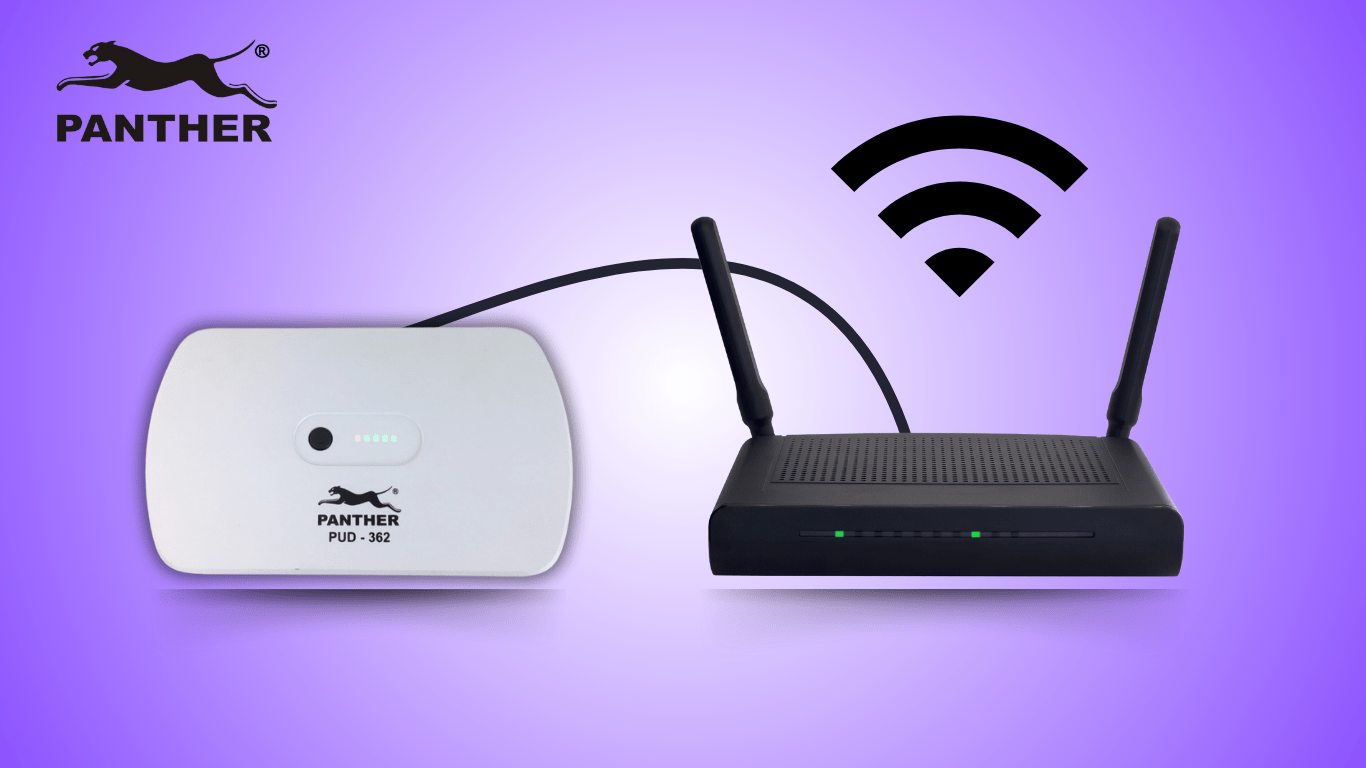
Factor 4: Can the battery be replaced?
Lithium batteries are considered the gold standard used for DC UPS now, given its higher energy density and efficiency, faster charging speed, and longer lifespan. However, even lithium batteries, like all types of batteries go through a degradation process over a period of time.
As such, lithium batteries are expected to last up to 2 years, although this can decrease or increase depending on the usage. As such, when looking for a DC UPS to purchase, make sure to look for not just a lithium battery, but also confirm whether or not this battery can be replaced when needed. Otherwise, you’ll find yourself buying a new UPS every two years, which is quite wasteful.
Once you’ve answered these four questions, you’re good to go! In case you’re interested in purchasing a DC UPS, why don’t you check out Panther DC UPS PUD-362 below:
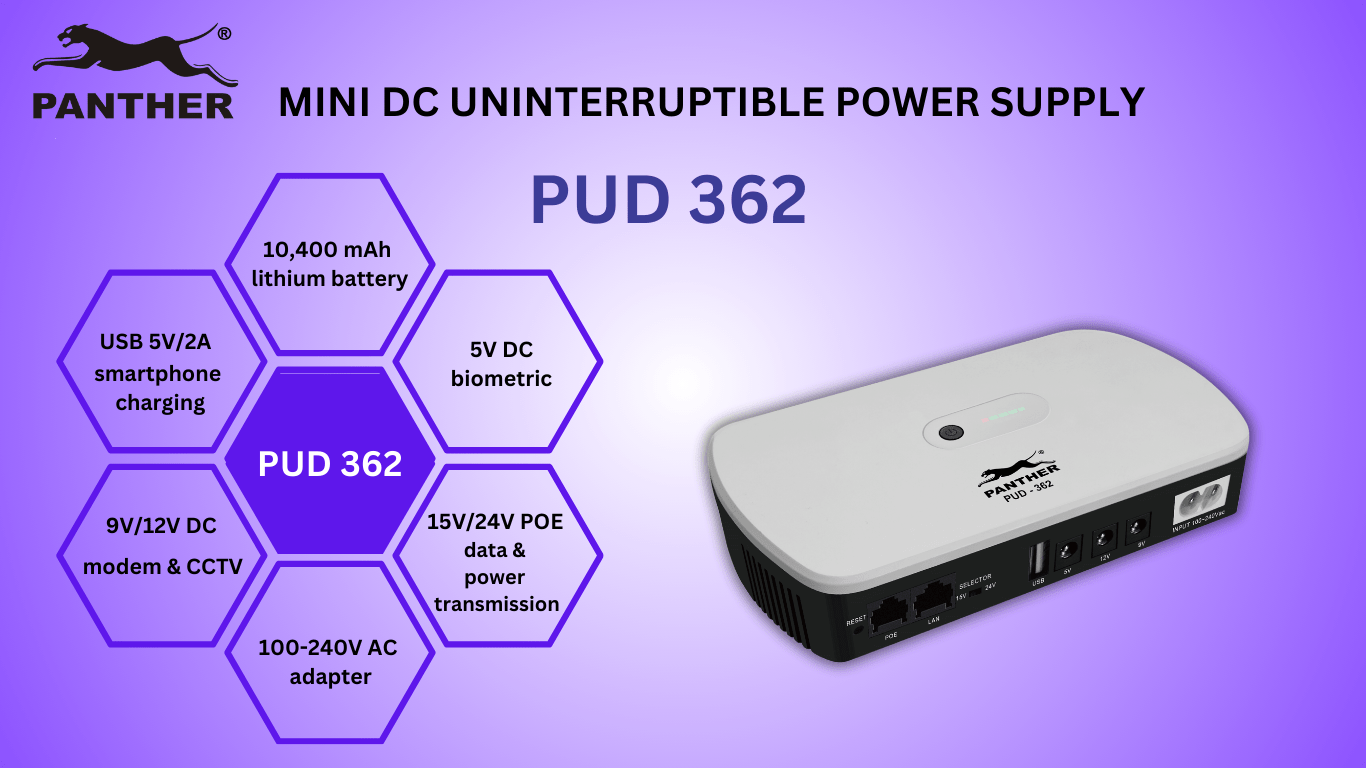
Standard Panther DC UPS specifications is as follows:
- Input: 100-240V AC / 60Hz (suitable to the Philippines
- Output Power (Max): 36 Watts
- USB DC 5V/2A (for smartphones)
- DC 5V/2A (for biometric and DC desk fans)
- DC 9V/2A (for CCTV cameras)
- DC 12V/2A (for WiFi routers and CCTV cameras)
- POE DC 15V/1A
- POE DC 24V/1A
- Total Capacity of the Battery: 10400 mAH (up to 13hrs run-time for 1pc. 12V 1A router)
- Dimension: 186mm x 114mm x 37mm
- Net Weight: 0.54kg



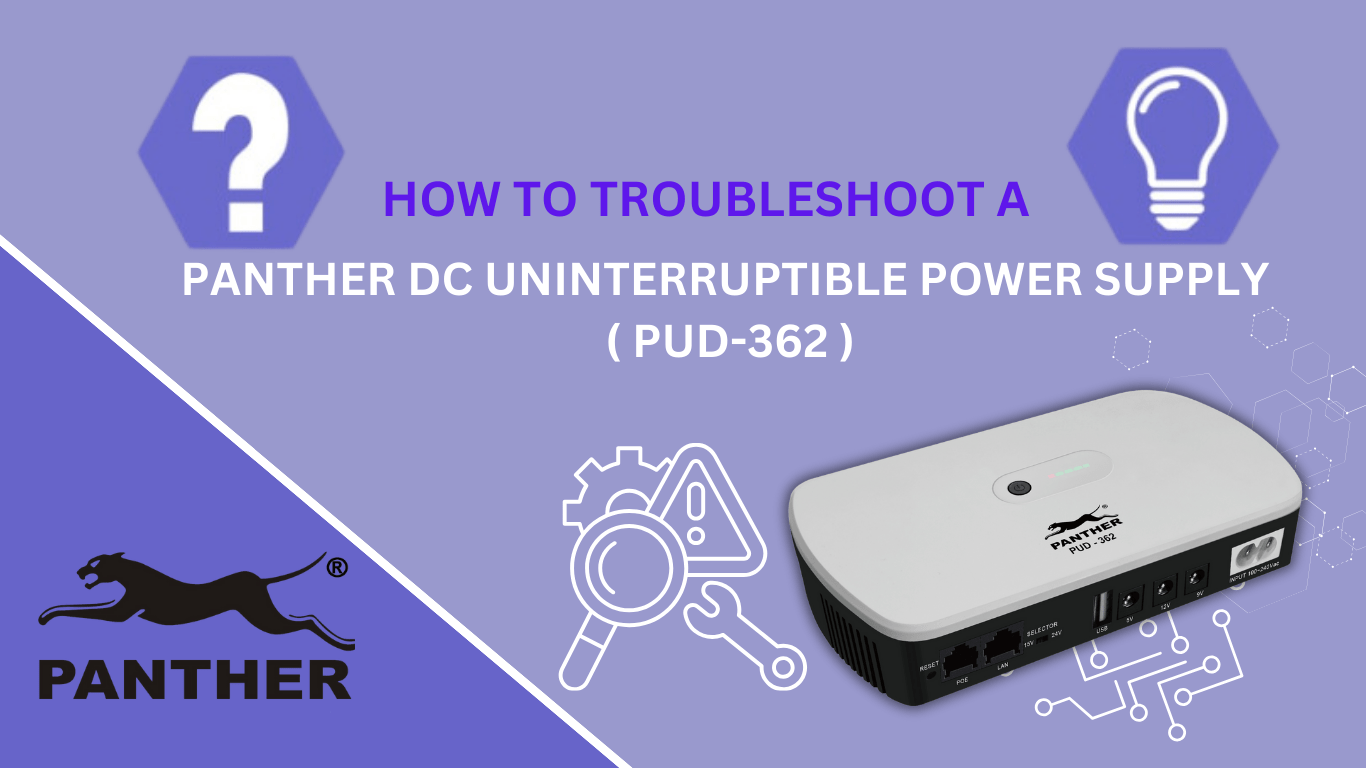
0 Comments